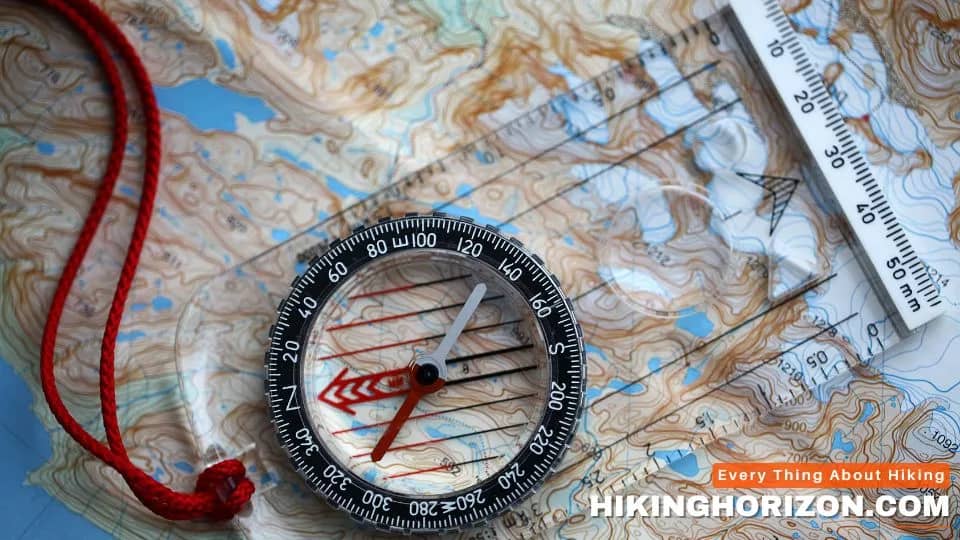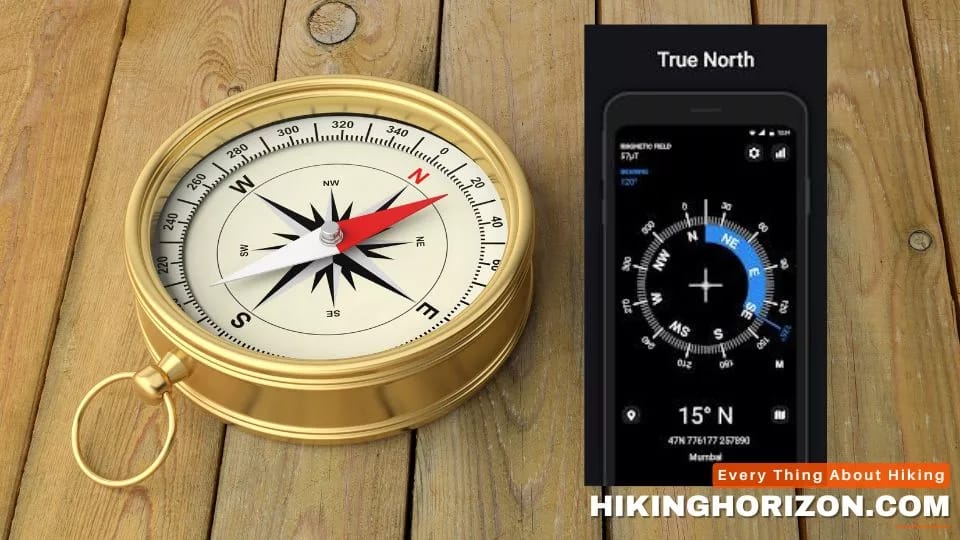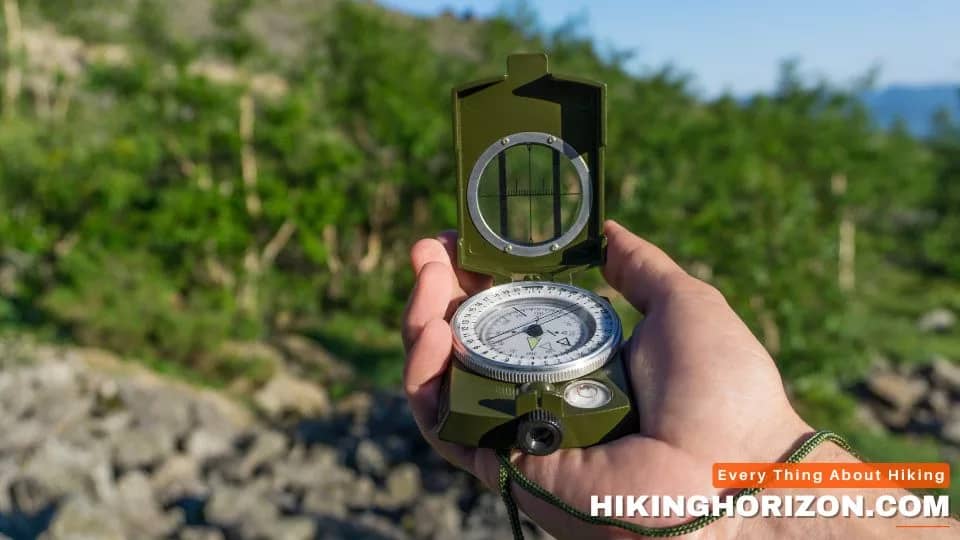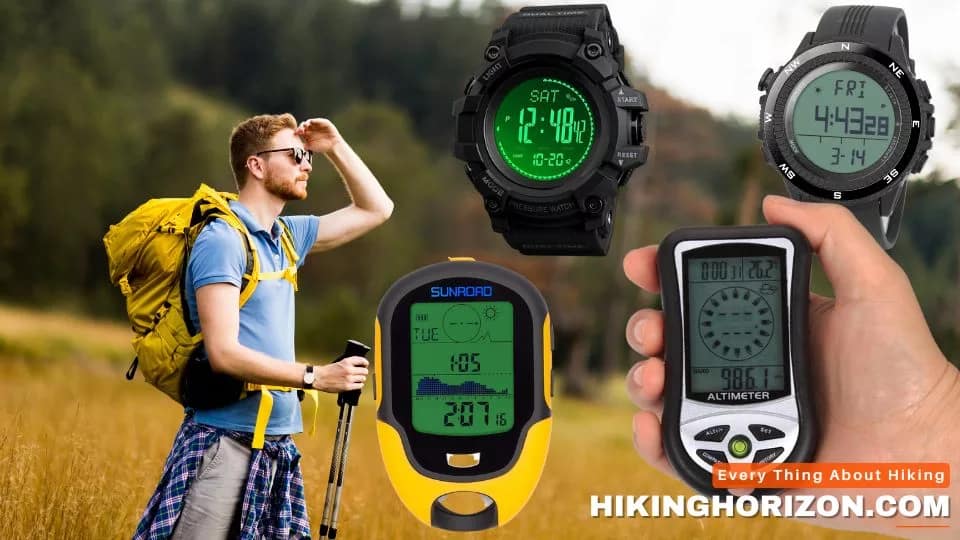
Finding true north and navigating the great outdoors with confidence requires an accurate compass. But with all the magnetic and electronic interference around us, how do you know your compass is accurate? Whether you use a lensatic compass or sighting compass, verifying accuracy is essential.
The good news is there are 19 tried and tested ways to check your compass and ensure proper function. From comparing map and compass alignments to accounting for differences between true north and magnetic north, this guide will walk through each method.
You’ll learn how to check for wavering needles, identify reversed polarity, recalibrate faulty compasses, and more using just simple reference points found in nature. With a precisely engineered compass like Silva, regular accuracy checks give peace of mind when venturing well away from civilization.
So, if you’ve ever wondered, “How do I verify my compass bearings?” before trekking into the wilderness, read on. We’ll answer whether your compass is pointing properly and can be trusted for accurate navigation.
Table of Contents
What Makes Compass Needles Point North?

The key to understanding compass accuracy is knowing what makes compass needles point north in the first place. Compass needles point north due to the Earth’s magnetic field. Our planet generates a magnetic field that surrounds the globe, with the magnetic north pole located close to the geographic north pole. The compass needle is itself a tiny magnet, and like all magnets, it aligns itself with the planet’s magnetic field lines. The red end of the needle points toward magnetic north.
However, there is a difference between true geographic north, the axis on which the planet spins, and magnetic north, where the field lines converge. Depending on where you are on Earth, these can be offset by several degrees due to variances in the magnetic field. The angle between true and magnetic north is called magnetic declination. More on this later.
#1 Check for Consistency Against Known Reference Points

One of the easiest ways to verify a compass is functioning properly is to check it against known reference points. Take the compass outdoors and point it in the direction you know is north, south, east, or west based on landmarks or the position of the sun. The compass should align with those cardinal directions.
You can also use topographic maps which indicate true north with grid lines. Orient the map so that the north on the map is pointing toward the true north in reality. Then, align your compass and see if the needle matches the map orientation.
Similarly, you can use apps like Google Maps to reveal your latitude and longitude. Use those coordinates to find true north, then check if your compass needle points that way when properly oriented. Consistency across these reference points indicates an accurate compass.
#2 Watch for Any Deviation or Wobbling
A quality compass needle should point steadily and unwaveringly when held level. There should be no discernible wavering or quivering. If you notice even slight deviations back and forth rather than a firmly fixed direction, that likely indicates a problem with the compass.
The compass may have been magnetized improperly, causing an unstable magnetic charge. Weak magnets or cheap materials can also lead to a needle that doesn’t hold its alignment. Avoid compasses with any sort of wobble or oscillation when reading them.
#3 Use a Separate Compass for Comparison
One of the best ways to verify accuracy is to check against a separate compass known to be in good working order. Compare the readings on two different compasses when oriented in the same direction at the same location.
Quality compasses should have little to no variation between their readings. Look for consistency in the bearing indicated on both instruments when aligned side-by-side and pointed the same way. Any significant deviation likely means one of the compasses is faulty.
#4 Check for Interference From External Magnetic Fields

Compass needles can sometimes be pulled off course by external magnetic fields in close proximity. Fields from objects like smartphones, speakers, or magnetic rocks can interfere with the compass reading. Scan the area for potential sources of magnetism and remove the compass from their vicinity.
You can also test for interference by moving the compass in different orientations and locations in the area. Point it vertically and horizontally, and bring it closer or farther from potential magnetic objects. If the readings change significantly, that reveals the influence of outside magnetic forces. An undisturbed compass will give consistent bearings regardless of orientation.
#5 Determine Reversed Polarity to get an accurate navigation
In rare cases, the magnetic polarity of a compass can become reversed due to exposure to a strong external magnetic force. This results in the needle pointing south instead of north.
You can check for reversed polarity by holding the compass vertically and viewing it from directly above. The north end of the needle should still point north, even in this upside-down orientation, if the compass is functional and undefected. If it points the opposite way, then the polarity has likely been flipped.
This can be fixed by re-magnetizing the compass using the proper magnetic direction. Stroke the needle with a magnet aligned from south to north to reestablish the correct polarity.
#6 Account for Magnetic Declination
As mentioned earlier, you always need to account for the difference between true geographic north and where the compass needle actually points toward magnetic north. The angle of variance between them is known as magnetic declination and changes based on your location.
Declination ranges from 0 to 30+ degrees depending on latitude. You’ll get inaccurate bearings if you don’t adjust compass readings to account for it. Fortunately, most maps and GPS devices indicate the declination offset for any given area. Use this information to orient your compass properly to true north.
Related Article: Magnetic Compass vs Digital Compass: Exploring the Differences and Advantages
#7 Keep Distance From Ferrous Metals objects and Magnets

For optimal accuracy, keep a good distance between your compass and any ferrous metals or strong magnets. Nearby iron or steel objects can pull the magnetic needle off course. Maintain at least 18 inches of clearance. Also, avoid placing compasses close to magnetized objects like other compasses, knives, or magnetic smartphone cases, which can interfere.
It’s wise to carry your compass outside your pack in a separate pouch or pocket. Keep it on your person but not directly against other magnetic materials. Follow these tips, and your compass-bearing accuracy will improve.
#8 Watch Out For Electromagnetic Fields
In the modern world, there are many invisible electromagnetic fields that can throw off compass readings if you get too close. These include the EMFs from power lines, electrical circuits, microwaves, security systems, wireless devices, and more. Keep compasses at least 3 feet away from these sources of electromagnetic radiation for best accuracy.
EMF interference will cause the compass needle to spin randomly or waver in place. Move away, and the needle will stabilize. But maintain a good distance from electronics and electrical wires when reading compass bearings. Their magnetic influence can override the Earth’s fields.
#9 Consider a Quality Compass Like Silva or Suunto
Not all compasses are created equal. For the most accurate and reliable performance, invest in a quality compass from a premium brand. Top manufacturers like Silva, Suunto, and Brunton are known for making precision navigational tools.
These compasses use quality magnets that provide greater stability. Their needles align firmly to magnetic fields without wavering. The housing and materials also protect the magnetics from interference or defects. While costlier, a professional compass will provide greater dependability and accuracy.
#10 Test in Open Outdoor Areas First
The farther you are away from potential magnetic interference, the easier it is to verify accuracy. Do initial tests in wide open outdoor spaces first before using a compass in riskier areas nearer metals or electronics.
Open parks, fields, trails, and nature preserves provide a clean slate to check compass reliability. Revealing any issues in magnetically “quiet” areas builds confidence before relying on it in more complex terrain. Don’t fully trust a new compass until observing consistent performance in interference-free environments first.
#11 Compare Bearings on Different Compass Models

Another verification tactic is to compare bearings between two different compass models simultaneously. For example, take a reading on a simple, low-cost compass, then compare it to the bearing indicated on a premium one like Silva or Suunto.
Align the compasses side-by-side, pointed in the same direction. Look for divergence in the readings. If one compass varies significantly from the other, it likely has a defect or accuracy issue. However, matching bearings confirm both instruments are functioning properly.
Related Article: Top 10 Best Compasses for Hiking Beginners in 2023 – Find your way Effortlessly
#12 Consider Using Smartphone Compass Apps
Modern smartphones contain a digital compass that provides directional readings via a compass app. While not as reliable as a dedicated magnetic compass, these can be a baseline reference to compare against.
Take a measurement on your physical compass, then check it against the smartphone compass oriented the same way. Look for any major discrepancies. Apps like Compass 360 Pro even show magnetic declination for your location to account for true north. Just beware of potential EMF interference from the phone itself affecting readings.
#13 Recalibrate Interior Compasses Outdoors
The accuracy of simple, inexpensive compasses can degrade over time with extended use, especially indoors. To restore correct alignment, it helps to recalibrate them outside in the proper Earth magnetic field.
Slowly rotate the entire compass through all directions, focusing on north, south, east, and west. This allows the magnets to realign with the planet’s fields. Take readings against known reference points to verify the recalibration was effective before relying on it again for navigation.
#14 Consider Digital Compasses for Enhanced Accuracy
Digital compasses use technology like magnetometers and gyroscopes rather than magnetic needles to determine orientation. This makes them less susceptible to interference or defects. However, they are reliant on batteries and technical components.
Still, brands like Brunton and Suunto make high-precision digital compasses favored by surveyors and other professionals. They indicate true north more accurately than traditional magnetic compasses. Just be sure to keep backup batteries on hand in case they die in the wilderness.
Related Article: Top 5 Best Digital Compasses For Hiking
#15 Maintain Proper Compass Care and Handling

To keep your compass working accurately, be sure to care for it properly. Avoid dropping or striking compasses. Store them safely in padded cases away from magnets, electronics, and metals. Don’t leave compasses in direct sunlight or extreme hot or cold temperatures for prolonged periods.
Follow usage and care instructions from the manufacturer. Clean with soft, non-abrasive cloths rather than chemical cleaners. By keeping your compass in good working order, you can have confidence in its readings.
#16 Double Check Bearings on Prominent Landmarks
When navigating in the field, take regular bearing checks on obvious reference points to verify continued accuracy. For example, frequently take a bearing reading on a noticeable mountain peak as you travel.
The bearing indicated on that fixed landmark should remain the same if your compass is functioning properly. Subtle differences could indicate a problem developing or magnetic interference in the area. Reconfirm your compass against permanent visual features whenever possible.
#17 Beware Magnetic Storms and Solar Flares
During magnetic storms and solar flares, the Earth’s magnetic field can fluctuate in strength and stability. These electromagnetic disturbances from solar activity can cause compass readings to be off.
Your compass may appear to work fine until a sudden spike in solar radiation causes the needle to spin randomly. When solar weather reports predict storms and flares, take orienteering bearings skeptically and seek redundant navigation methods like GPS. The compass will re-stabilize after the event passes.
#18 Consider Professional Compass Calibration
If accuracy remains in question even after troubleshooting, you may want to send your compass for professional recalibration. Companies like Silva offer factory servicing to realign magnets and ensure optimal function.
This precision tuning and adjustment by qualified technicians can restore accuracy and dependability if DIY efforts fail. Expect to pay $15-30 for professional calibration, but the investment brings peace of mind for serious navigation needs. Keep your receipts and paperwork as proof.
#19 Trust Your Compass But Verify With Other Methods
While orienteering compasses can provide reliable directional assistance, it’s always wise to verify with other methods like maps, GPS, or astronomical cues. Don’t place complete blind faith in a single instrument.
Utilize redundant wayfinding techniques wherever feasible. Match the compass heading against your map route and GPS biengings to confirm you’re on track. And never fully dismiss your own senses and human pathfinding skills in favor of total compass dependency. Use it as an aid, not a crutch.
What is magnetic declination, and how does it affect compass accuracy?
Magnetic declination is the difference between true geographic north and magnetic north. It is caused by variances in the Earth’s magnetic fields across different locations. This declination can cause significant inaccuracy in compass bearings if not properly accounted for.
True north is the direction of the geographic North Pole, representing the axis on which the planet spins. However, compasses don’t point exactly to the true north. Rather, they align with the pull of the Earth’s magnetic fields, which direct toward the north magnetic pole in a slightly different orientation.
The angle between these two north poles can range from 0 to 30 degrees or more, depending on your current latitude. For example, in some parts of Canada, true north and magnetic north differ by over 20 degrees.
To ensure your sighting compass or lensatic compass reads accurately, you need to adjust for your local magnetic declination. Most topographic maps will indicate the declination offset. You can also get the declination from GPS apps or websites like NOAA’s Magnetic Field Calculator.
Once you know the declination for your region, you can apply this correction to your compass bearings. Accounting for the precise variance between true north and magnetic north prevents over or under-shooting your target destination.
It’s advised to test and recalibrate your compass regularly to maintain optimal accuracy. Do this in open areas, well away from electronics, metals, and magnets that could affect needle direction. Take consistent compass bearings on landmarks and reference points.
Following these best practices helps ensure your compass points steadily to magnetic north despite the surrounding magnetic fields. Then, applying declination adjustments will give you the most accurate navigation bearings possible.
Related Article: How to find direction without a compass? 11 Clever Ways You Should Know!
Key takeaways

- Verify accuracy by checking the map and compass gridlines for proper compass points to ensure it work.
- Watch for wavering; an unsteady needle suggests a weak magnet.
- Compare identical bearings against separate known good lensatic compasses. The minimal deviation is ideal.
- Check the dial vertically for reversed polarity, causing incorrect south pointing.
- Adjust for differences between true north and magnetic north declinations.
- Compare against sun location and mobile phone apps like Compass 360 Pro in open areas well away from buildings initially.
- Keep the compass in a separate location away from electronics, wires, and metals to avoid interference.
- Quality precisely made compasses like Silva have sturdy housing to maintain calibration.
- Recalibrate by rotating the compass targeting north, south, east, and west to realign magnets with Earth’s fields.
- Take repetitive bearings on landmarks to verify the consistent accuracy of specific directions over time and distance.
Frequently Asked Questions (FAQs)
How can I check that my map and compass are properly aligned to show accurate compass points and bearings?
You should verify proper alignment by first orienting your map so the gridlines match true north. Then, place your compass flat on the map and rotate it until the compass needle lines up with the north gridlines. If the compass needle points along the map’s north lines, it indicates both are aligned to true north, and your compass is likely working accurately.
What should I do if my lensatic compass needle seems to waver or wobble unsteadily when holding the compass level?
An unsteady compass needle usually means the magnet is weak or of poor quality. This can make it difficult to get an accurate bearing. Consider replacing the compass with a quality model that has a precisely made needle and housing to keep the magnet stable. Brands like Silva make sturdy compasses suitable for the great outdoors.
Why is it recommended to compare my compass against a separate lensatic compass when testing for accuracy?
Comparing your compass side-by-side with another compass known to be accurate can help reveal defects. Take identical bearings with both instruments pointed in the same specific direction. If the readings align and show minimal deviation, it confirms both compasses are likely functioning properly. But if there is a significant difference, one of the compasses may have a problem. Using a proven, accurate secondary compass gives you a baseline for comparison.
How can I check if my compass needle is incorrectly pointing south instead of north due to reversed polarity?
You can test for reversed polarity by holding your compass dial vertically in front of you and viewing it from directly above. While the compass housing may be oriented differently, a properly working compass needle should still point toward magnetic north. If the needle instead points south in this upright position, it indicates reversed polarity. The magnets will need realigned by a professional or with a strong magnet stroked from south to north.
Why do I need to account for differences between true north and magnetic north when using a compass?
The variance between true geographic north and magnetic north is known as magnetic declination. It can reach 20 degrees or more, depending on your location on the planet. Failing to adjust compass bearings to account for this declination can lead to significant inaccuracy in navigation. Refer to topographic maps which show declination for your region. Digital compasses and GPS apps can also automatically factor in this adjustment.
How far away should I keep my compass from potential sources of interference like metals or electronics?
It’s recommended to keep your compass well away from objects that can disrupt accuracy, usually a minimum of 12-18 inches. Metals and strong magnets can pull compass needles off course. Maintaining distance from electronics, electrical wires, and AC power sources also helps avoid interference from electromagnetic fields. Store your compass in a separate location from anything magnetic or electronic.
Why might a compass needle seem more stable and accurate when tested outdoors in open areas first?
Open outdoor environments provide relatively minimal magnetic interference, especially compared to indoor spaces or areas near cars, buildings, or power lines. Verifying compass accuracy in a clear, unobstructed space allows you to establish a performance baseline free from disruptive magnetic fields. This helps build trust in the compass before relying on it in more complex landscapes.
How should I properly recalibrate or realign an older compass that may have declined in accuracy over time?
You can recalibrate an older compass by rotating and pointing it in full turns facing north, south, east, and west while outdoors. What is magnetic declination, and how does it affect compass accuracy? Away from obstructions. This allows the magnet within to realign with the Earth’s natural magnetic fields. Check your bearings against the sun or mobile phone compass to verify accuracy after recalibrating. Over time, magnets can lose their charge, so periodic recalibration helps maintain precision.
Why is it advisable to periodically take bearings on visible landmarks as you navigate with a compass?
Frequently checking your compass bearing against permanently fixed landmarks verifies whether the instrument is maintaining consistent accuracy as you move. The bearing or specific direction to a mountain peak, tower, or other unmoving object should remain largely the same if your compass is functioning properly. Note any major shifts, which likely indicate a disruption occurred, and calibration is needed.
How might the performance of my compass be impacted during periods of solar flares or magnetic storms?
Solar activity can create magnetic disturbances that potentially impact compass accuracy. During solar flares and magnetic storms, the fluctuations in the Earth’s magnetic field may cause compass needles to spin erratically. Take extra precautions when navigating solely by compass during these events. Consult GPS, maps, and other orienteering methods to supplement or confirm your compass readings until conditions stabilize.
How can I check a compass on my mobile phone for accuracy?
Most smartphones have a built-in compass app that utilizes the device’s magnetometer. To check it’s working accurately, turn off any interference by closing other apps and keeping well away from magnets or electronics. In an open area outdoors, compare your mobile compass against a trusted sighting compass or lensatic compass when held aligned and pointed in the same specific direction. The bearings should match closely – if not, your phone’s compass needs calibration. Also, beware that some phone cases can affect accuracy. Recalibrate your phone’s compass by moving it slowly in a figure 8 motion.
Is the iPhone compass accurate for navigation?
The iPhone does contain a digital compass that points toward magnetic north. However, its accuracy can vary. Test it before relying upon it in the great outdoors. The compass should function decently if properly calibrated and away from disruptive magnetic fields. But for precision navigation, a dedicated lensatic compass is recommended. The iPhone compass may waver if not held flat and level. Periodically re-calibrate by tracing Figure 8. And account for magnetic declination differences between true north and magnetic north to improve iPhone compass accuracy. While useful in a pinch, the iPhone compass lacks the precision of a Silva or Suunto.
The Bottom Line ─ How Do You Know your Compass is Accurate
Checking a compass for accuracy doesn’t have to be complicated. Start by observing basic performance against known reference points. Be mindful of potential interference, compare against digital or separate compasses, and recalibrate as needed. With sound knowledge of magnetic declination and quality construction, a compass can provide years of accurate guidance on land or sea when cared for properly. Take the time to verify accuracy, and your compass will keep you confidently on course.

MARK RODRIGUEZ
Mark is an experienced backpacker who has completed several multi-day hikes, including the John Muir and Wonderland Trail. He is also a hobbyist photographer who delights in capturing the captivating essence of nature through his camera lens. Mark is passionate about environmental conservation and often volunteers for trail maintenance and clean-up projects.

MARK RODRIGUEZ
Mark is an experienced backpacker who has completed several multi-day hikes, including the John Muir and Wonderland Trail. He is also a hobbyist photographer who delights in capturing the captivating essence of nature through his camera lens. Mark is passionate about environmental conservation and often volunteers for trail maintenance and clean-up projects.




Your hard work is appreciated; thank you for the excellent material.
Good post! We will be linking to this particularly great post on our site. Keep up the great writing
Hi there to all, for the reason that I am genuinely keen of reading this website’s post to be updated on a regular basis. It carries pleasant stuff.
Pretty! This has been a really wonderful post. Many thanks for providing these details.
Thank you!!